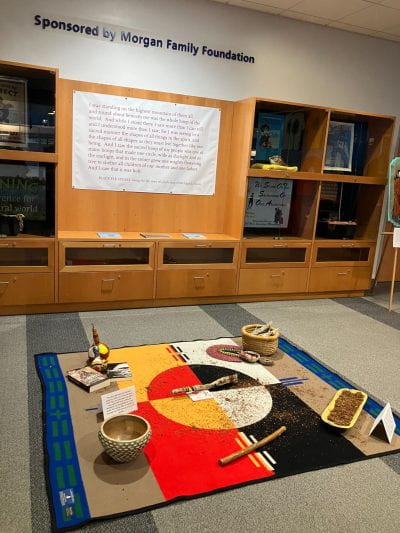500 Mile American Indian Spiritual Marathon: A Journey of Heritage and Activism
This fall, the Africana, Asian American, Chicano, & Native American Studies Center (AAACNA) at San José State University’s Dr. Martin Luther King, Jr. Library is showcasing an enlightening exhibit titled “Running in Prayer: The History and Purpose of the California 500 Mile American Indian Spiritual Marathon Relay Team.” This event highlights the spiritual and cultural significance of the marathon that has united numerous individuals over the decades in a collective journey for awareness and empowerment.
The Exhibit and Its Curators
The exhibit is jointly curated by SJSU Kinesiology Lecturer Marty Behler, a member of the AAACNA advisory board, and Peggy Cabrera, a librarian serving as a liaison for various academic departments. Visitors can experience an array of historic images, photo albums, maps, flags, running gear, and a ceremonial blanket, all generously donated by current and former participants of the 500-mile relay. This diverse collection aims to deepen understanding of the cultural heritage and history surrounding the spiritual marathon.
The Origins of the 500 Mile Run
Established in 1978 by Dennis Banks, a co-founder of the American Indian Movement (AIM), the 500 Mile American Indian Spiritual Marathon commemorates the Longest Walk, a significant event where over 500 tribes walked from San Francisco to Washington, D.C. to advocate for the American Indian Religious Freedom Act of 1978. The first 500-mile run, steered by educator John Malloy, sought to raise awareness around Native American rights and struggles while honoring the movement’s heritage.
Cultural and Political Support
The marathon gained notable support from activists like César Chávez, Dolores Huerta, and actor Marlon Brando, highlighting its importance beyond just a physical feat. Over the years, it has fostered an environment where discussions surrounding Native rights, access to land, and water conservation have been vital components of the event. Each year, participants run not only for personal wellness but also as a message of solidarity for Indigenous peoples facing myriad challenges.
The Continuous Legacy of the Marathon
Participants of the marathon, referred to as “spirit runners,” train throughout the year leading to the event. Recently, spirit runners gathered at SJSU for training runs coinciding with the American Indian Heritage Celebration, exemplifying the enduring commitment and ever-evolving nature of this legacy. The event is open to individuals of all ages and backgrounds, promoting a sense of community engagement and awareness. Celebrated tributes include lists of legislation advocating for cultural and environmental justice.
Engaging Present-Day Narratives
The significance of the 500 Mile American Indian Spiritual Marathon is articulated through the AAACNA exhibit, which hosts various artifacts showcasing the triumphs and struggles of Indigenous peoples. As noted by Cabrera, the exhibit serves to present Native Americans in contemporary society, shattering outdated stereotypes of the “vanishing race.” This focus aids in educating the public about the ongoing narratives that shape Native American lives today across the U.S.
Looking Ahead: A Committee for Change
While the current AAACNA exhibit runs through early January 2025, the legacy of the 500 Mile American Indian Spiritual Marathon is set to endure. Local activists like John Paul Amaral, president of the Native American Student Organization at SJSU, actively engage in preserving and presenting Indigenous histories and narratives in connection with this cultural movement. Amaral notes the importance of museums and libraries, like the AAACNA, in amplifying voices often neglected in mainstream education systems.
For further information on this groundbreaking event, visit the Running in Prayer exhibit at AAACNA.
